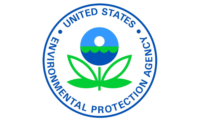President Obama signed a bipartisan bill to reform the Toxic Substances Control Act (TSCA), the first major update to an environmental statute in 20 years. That’s great news for the environment and for the health of all Americans.
TSCA was first passed in 1976 to help keep dangerous chemicals off the market and avoid making people sick. Back then, health experts already knew that certain chemicals could cause very serious health impacts, including cancer, birth defects, and reproductive harm.
While the intent of the original TSCA law was spot-on, it fell far short of giving EPA the authority we needed to get the job done.
It became clear that without major changes to the law, EPA couldn’t take the actions necessary to protect people from toxic chemicals. Diverse stakeholders, including industry, retailers, and public health and environmental experts, recognized these deficiencies and began to demand major reforms to the law.
The updated law gives EPA the authorities we need to protect American families from the health effects of dangerous chemicals. I welcome this bipartisan bill as a major step forward to protect Americans’ health. And at EPA, we’re excited to get to work putting it into action.
The Frank R. Lautenberg Chemical Safety for the 21st Century Act (H.R. 2576) was made possible by years of hard work by both Democrats and Republicans in the House and the Senate, as well as EPA staff who have provided significant technical assistance. I applaud everyone who stepped up and made it happen. It’s historic, and it’ll make Americans’ lives better.
TSCA was intended to be one of our nation’s foundational environmental laws. In terms of its potential for positive impact, it should have ranked right alongside the Clean Water Act and the Clean Air Act, which, since the 70’s, have dramatically improved water quality and helped clean up 70 percent of our nation’s air pollution. But it hasn’t.
Forty years after TSCA was enacted, there are still tens of thousands of chemicals on the market that have never been evaluated for safety, because TSCA didn’t require it. And the original law set analytical requirements that were nearly impossible to meet, leaving EPA’s hands tied – even when the science demanded action on certain chemicals.
The dangers of inaction were never more stark than in the case of asbestos, a chemical known to cause cancer through decades of research.
During the first Bush Administration, EPA tried to ban asbestos under TSCA, but the rule was overturned in court. In the law’s 40-year history, only a handful of the tens of thousands of chemicals on the market when the law passed have ever been reviewed for health impacts, and only five have ever been banned.
Because EPA was not empowered to act on dangerous chemicals, American families were left vulnerable to serious health impacts. At the same time, some states tried to fill the gap to protect their citizens’ health—but state-by-state rules are no substitute for a strong national program that protects all Americans. Chemical manufacturers, consumer retailers, and others in industry agreed: reform was sorely needed.
As with any major policy reform, this one includes compromises. But the new bipartisan bill is a win for the American people—because it’s a victory for EPA’s mission to protect public health and the environment.
Here are a few highlights:
- The new law requires EPA to evaluate existing chemicals, with clear and enforceable deadlines. Under the old law, the tens of thousands of chemicals already in existence in 1976 were considered in compliance, without any requirement or schedule for EPA to review them for safety. EPA is now required to systematically prioritize and evaluate chemicals on a specific and enforceable schedule. Within a few years, EPA’s chemicals program will have to assess at least 20 chemicals at a time, beginning another chemical review as soon as one is completed.
- Under the new law, EPA will evaluate chemicals purely on the basis of the health risks they pose. The old law was so burdensome that it prevented EPA from taking action to protect public health and the environment–even when a chemical posed a known health threat. Now, EPA will have to evaluate a chemical’s safety purely based on the health risks it poses—including to vulnerable groups like children and the elderly, and to workers who use chemicals daily as part of their jobs—and then take steps to eliminate any unreasonable risks we find.
- The new law provides a consistent source of funding for EPA to carry out its new responsibilities. EPA will now be able to collect up to $25 million a year in user fees from chemical manufacturers and processers, supplemented by Congressional budgeting, to pay for these improvements.
Bottom line: this law is a huge win for public health, and EPA is eager to get to work.







.jpg?t=1721257160)
